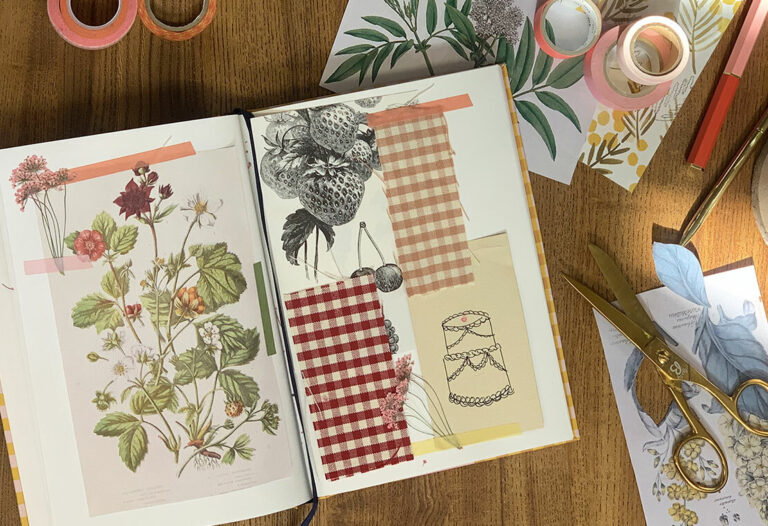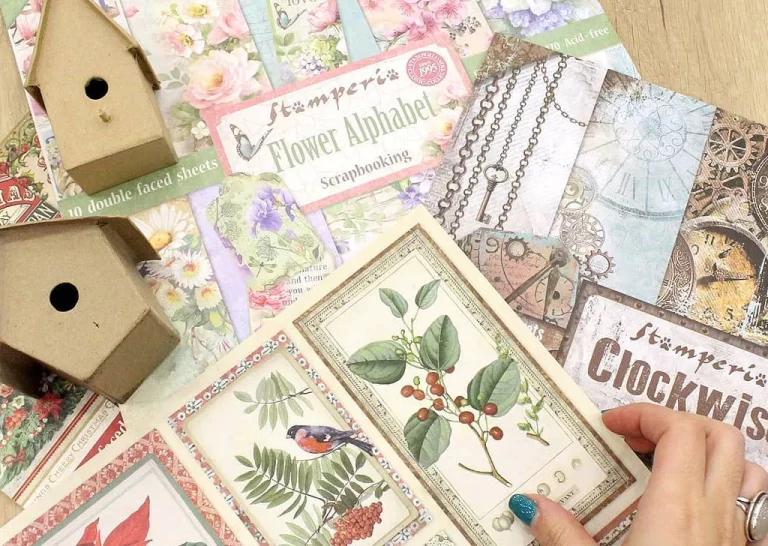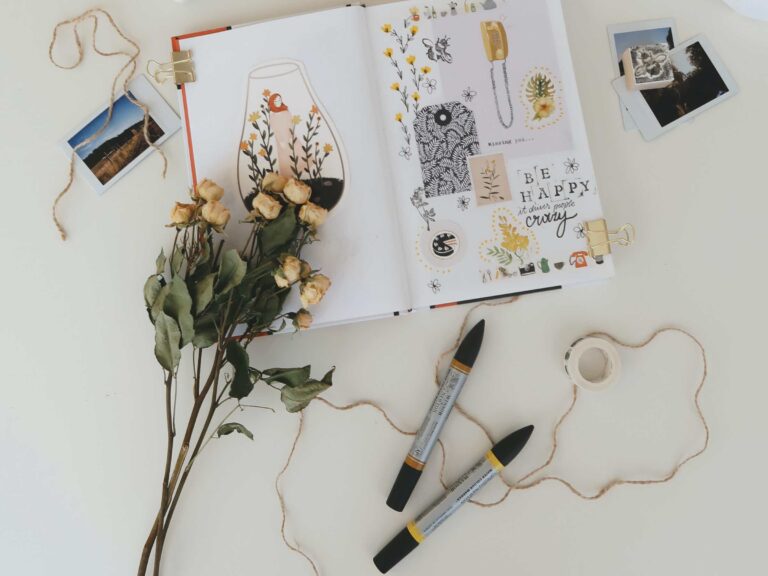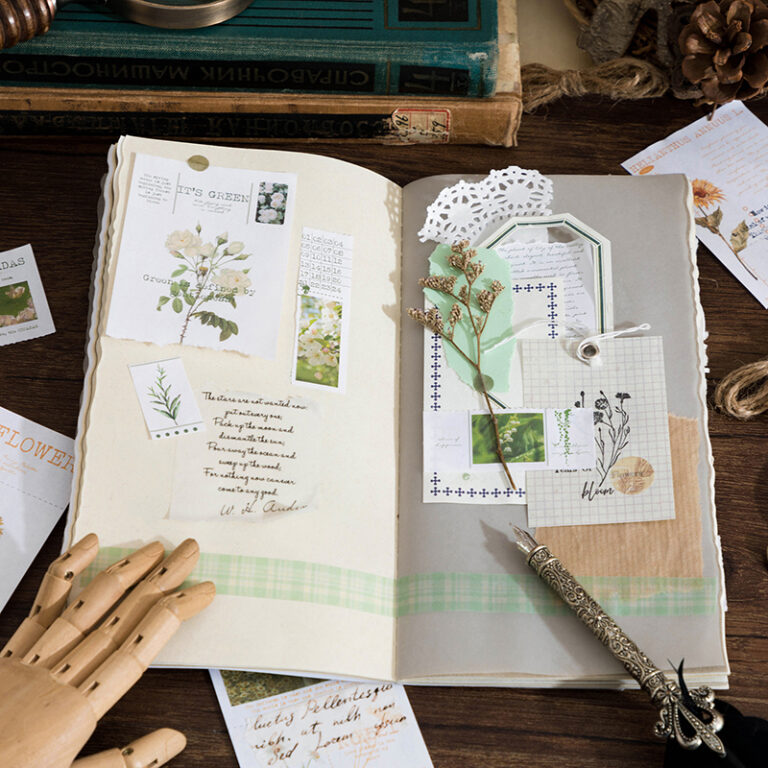Turning Photos into Treasures: Scrapbooking Ideas for Personalized Gifts
In today’s fast-paced world, where memories are often lost in the endless streams of notifications and social media feeds, there is something delightfully tangible about the act of flipping through a photo album. Scrapbooking, the art of preserving memories and telling stories through cutting, collage and creativity, offers a unique way to transform photos into true treasures. If you’re looking for personalized, meaningful gifts, or want to explore a form of therapeutic artistic expression, scrapbooking could be the answer. In this article, we’ll explore creative scrapbooking ideas that can turn your photos into extraordinary personalized gifts.
Table of Contents
The Power of Preserved Memories
Before we dive into scrapbooking ideas, it’s important to understand the lasting power that preserved memories can have. While we live in a digital age where photos can be easily taken and stored on electronic devices, there is something magical about creating a physical narrative with photos. Scrapbooking albums offer a personal touch, a connection to the past, and a way to share stories with future generations.
The power of memories preserved in photos is an incredible force that profoundly affects our lives and emotional well-being. Here are some ways memories preserved in photos have a positive impact on our lives:
- Rescue the Past: Photos have the power to transport us back in time, allowing us to relive special and precious moments from the past. When looking at a photo, we are immediately taken back to that moment and can remember the emotions, smells and sounds associated with it.
- Connection with Loved Ones: Photos of friends and family, especially those who are no longer present in our lives, allow us to maintain a connection with them. Photos remind us of your smiles, facial expressions and shared moments, keeping them alive in our hearts and minds.
- Milestone and Growth Records: Photos are a wonderful way to document personal growth, milestones and achievements. We can track our own development and that of our loved ones over the years.
- Expression of Gratitude: When looking at photos of happy moments and loved ones, we often feel a deep sense of gratitude. These images remind us of the blessings in our lives and encourage us to value them.
- Education and History: Old and historic photos are an important part of preserving history and culture. They document events, places and people from the past, providing valuable insight into previous generations.
- Therapy and Reflection: Photos can be a powerful therapeutic tool. By revisiting past memories, we can reflect on our experiences, learn from them, and even heal emotional wounds.
- Sharing Stories: Photos serve as a vehicle for sharing stories with others. They allow us to convey experiences, lessons and important moments with friends and family.
- Self-Esteem Boost: Photos of moments of achievement and happiness can increase self-esteem and self-confidence. They remind us of our accomplishments and times when we felt good about ourselves.
- Creative Inspiration: Many people find inspiration in old photos or images of places and people that motivate them. This can stimulate creativity and the search for new adventures.
- Preservation of Traditions and Values: Photos often capture moments of family traditions and values passed down from generation to generation. They keep the continuity of these important aspects of our lives alive.
- Therapeutic Effect on Dementia Patients: In dementia patients, looking at old photos can have a significant positive impact, helping to evoke memories and stimulate conversations and interactions.
- Record of Legacies: Photos can serve as tangible records of personal and family legacies. They tell the story of who we are, where we come from and what we value.
The power of memories preserved in photos lies in their ability to connect us with our past, nurture relationships, feed our souls, and remind us of the joys and challenges that have shaped our lives. Each photo is a time capsule that allows us to appreciate life’s journey in a deep and meaningful way.
Scrapbooking Ideas for Personalized Gifts
1. Themed Birthday Album
Celebrate a loved one with a themed birthday album. Select photos from childhood to present, highlighting important moments and milestones. Use props related to the birthday theme, like confetti and tinsel, to add a festive touch to the pages.
2. Journey through Nostalgia
Recreate a memorable trip through a themed album. Include maps, entrance tickets, and small collectibles that were collected during the trip. Each page can capture a location visited and the unique experiences associated with it.
3. Family Timelines
Trace your family history through a scrapbooking timeline. Start with old photos from generations past and work your way up to the most recent photos. This not only honors the family’s roots, but also creates a visual record of evolution over time.
4. Achievements and Celebrations
Celebrate personal achievements like graduations, job promotions, sporting milestones or other successes in a dedicated album. Incorporate inspirational quotes and standout moments to capture the journey to success.
5. Captured Love Story
For couples, a scrapbooking album can chronicle the story of your relationship, from the first meeting to the special moments shared. Include love letters, dried flowers, and other romantic elements.
6. Children’s Treasure
For little ones, create an album that captures their childhood. Include drawings, letters to the future, photos of funny moments and special childhood memories. This could be a lovely gift when they grow up.
7. Tribute to Loved Ones
A memorial album for a deceased loved one can be a touching way to celebrate their life. Fill it with photos, shared memories, and stories that capture that person’s personality and importance.
8. Goals and Dreams
For an inspirational touch, create an album that represents future goals and dreams. Include visuals of places you want to visit, professional and personal goals, and use the album as an ongoing motivation tool.
What technique would you use to select photos?
Selecting photos for scrapbooking is a crucial part of the process, as it helps tell the story effectively and create a balanced, attractive layout. Here are some techniques and tips to help you choose the best photos for your scrapbooking project:
- Pre-Selection: Before you start choosing photos for the scrapbook, make a pre-selection of the images you have available. This can be done digitally by organizing your photos into folders by events or dates, or physically by spreading them out on a table for viewing.
- Define the Story: Think about the story you want to tell with your scrapbook. What is the central theme? What are the key moments you want to highlight? Having a clear idea of the story you want to tell will help guide your photo selection.
- Prioritize Featured Photos: Choose photos that are visually appealing and highlight significant moments. High-quality photos with good composition and emotional expressions are ideal.
- Variety of Angles and Perspectives: Include a variety of angles and perspectives to add visual interest to pages. This can include close-up photos, panoramic photos, and detail photos.
- Include Context Photos: Be sure to include photos that provide context to the story. This can include photos of scenery, locations, people present at the event and details that help tell the story completely.
- Edit Judiciously: If you have a lot of photos, edit judiciously. Remove duplicate or similar photos and choose only those that really contribute to the narrative.
- Consider Visual Cohesion: When choosing photos for a specific page, think about visual cohesion. Photos should work well together in terms of color, style, and theme.
- Remember Candid Photos: Candid and candid photos often capture genuine emotions and authentic moments. Don’t just focus on posed photos.
- Be Selective with Quantity: Don’t overload a page with too many photos. Generally, one to three photos per page works well, depending on the page size and layout.
- Choose Photos that Tell the Story: Each photo should contribute to telling the story in a meaningful way. Make sure that, together, the photos tell the narrative clearly.
- Take Care of Photo Quality: Make sure the photos you select are in good condition, with no tears, smudges or other visible damage.
- Review and Refine: After choosing your photos, do a final review to ensure they fit well into your planned layout and truly contribute to the story.
Remember that photo selection is a creative part of scrapbooking and may require some time and consideration. Be patient and willing to make adjustments as needed to ensure your scrapbooking pages tell the story in the most effective and impactful way possible.
Scrapbooking Therapy
In addition to being a way to create personalized gifts, scrapbooking also has therapeutic benefits. The act of choosing photos, organizing layouts, and adding creative elements can be relaxing and therapeutic. It works like a digital break, allowing you to immerse yourself in manual creativity and step away from the constant demands of technology.
The process of selecting photos for scrapbooking can be considered therapeutic for several reasons:
- Emotional Expression: Photo selection allows you to review your memories and choose those that have personal meaning. This can be an opportunity to emotionally connect with those memories and express your emotions, whether they are joyful, nostalgic, grateful, or even healing.
- Focus on Positivity: When choosing photos for scrapbooking, you often focus on happy memories and positive moments in life. This can help improve your mood and cultivate a sense of gratitude and appreciation for good experiences.
- Reconnecting with the Past: For some people, photo curation is a way to reconnect with the past, relive special moments, and even find emotional healing by revisiting and reinterpreting past events.
- Processing Emotions: Choosing photos can also be a way of processing emotions associated with past events, especially those that were challenging or painful. The act of selecting photos can help bring clarity and understanding to these emotions.
- Creativity and Self-Expression: Scrapbooking is a creative form of self-expression. The photo selection process, along with page design and choosing decorative elements, allows you to express your personality and style in a unique way.
- Focus and Relaxation: The act of selecting photos and creating a layout can be relaxing and meditative. It can provide time for focus and full attention, temporarily removing worries and stress.
- Social Connection: If you share your scrapbooking with others, such as friends or family, the photo selection process can be an opportunity to connect socially, share stories and memories, and strengthen relationships.
- Sense of Accomplishment: As you select and organize the photos in your scrapbook, you create a tangible product that represents your memories and accomplishments. This sense of accomplishment can be rewarding and strengthen your self-esteem.
Overall, scrapbooking offers a unique way to explore, celebrate, and deal with your memories and emotions. The photo selection process plays a central role in this therapeutic experience, helping to promote reflection, self-care and emotional well-being. It is an activity that combines creativity, memories and self-expression, and many people find significant therapeutic benefits from practicing it.
Conclusion
Turning photos into treasures through scrapbooking is a journey filled with creativity, personal expression and meaningful connections. Whether for personalized gifts that touch the heart or as a form of art therapy, scrapbooking offers a unique way to preserve memories in a fast-paced world. As we explore scrapbooking ideas, remember that the true value is in the narrative you create and the emotion your pages can evoke over the years.







